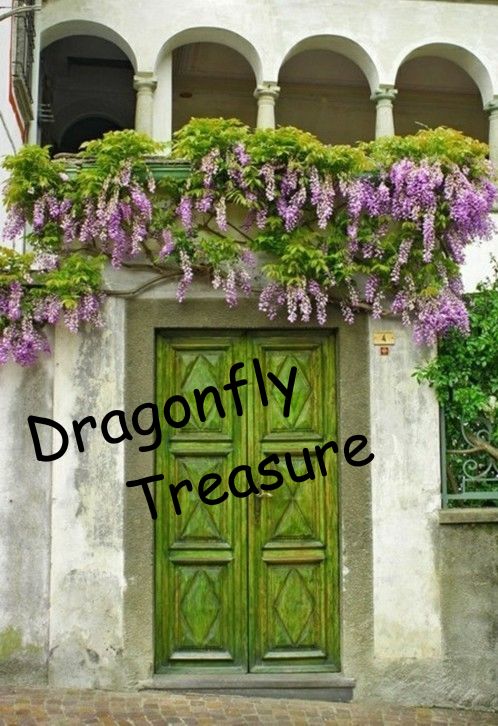Over the last few decades, populations of these iconic
orange and black Butterflies have declined by over 90 percent.
Like all Butterflies, Monarchs lay their eggs on select plants, called “host plants.” These are the only plants their caterpillars can eat. Milkweed is Monarchs only host plant. Milkweed is becoming harder for Monarchs to find. Despite being ecologically important and an often ornamental wildflower, most consider milkweed a weed to be eradicated, both in agricultural lands as well as in city and rural landscapes.
Milkweed was considered an invasive weed when I was growing up. Luckily our cows and sheep would eat it so no herbicides were used. Dad didn't like Butterflies. Butterflies to him meant caterpillars that could eat the crops and attack his vegetable garden. Not so good for a small time farmer trying to make ends meet. He'd go out early in the morning and hand pick the caterpillars off the vegetables and drop them in a coffee can with some gasoline in the bottom. Not a pleasant way to go, but at least he wasn't contaminating the land for which he had a lot of respect for.
Hmmm, maybe that's why I go out early in the morning and handpick the snails off my plants?
As we’ve gotten better at wiping out milkweed, Monarchs have suffered. Even when milkweed isn’t being targeted directly, Monarch habitat in the United States is being gobbled up by development. Monarchs are also being directly killed by pesticides, both as caterpillars and as adult Butterflies in farmlands and backyards.
The loss of any species weakens the ecosystem that all species rely on for survival, including humans. Monarch Butterfly decline is an indicator that there is something wrong in our shared environment and a warning that we could be affected as well. I'm sure we all want our Grandchildren to have a chance at seeing a Monarch Butterfly on a flower.
What Can We Do?
Create a Monarch Habitat – NWF’s Garden for Wildlife program can teach you how to turn any outdoor space into a complete habitat for Monarchs. Just provide food, water, cover and places to raise young. It all starts with what you plant and you can create a habitat garden in your own yard.
Plant Milkweed
The good news is that planting Milkweed is one of the easiest ways that each of us can make a difference for Monarchs. There are several dozen species of this wildflower, so no matter where you live, there is at least one milkweed species naturally found in your area.
Easily started from seed planted approx. 1/2'' deep,
then covered
Milkweed sprouts pretty quickly.
In addition to planting milkweed host plants for Monarch caterpillars it is also important to plant nectar rich plants for adult Monarchs. Adult Monarchs are dependent on nectar plants as a food source during Spring and Summer breeding, Fall migrations, and during overwintering.
Nectar Plants
Monarch Butterflies are attracted to the nectar from flowers like Lilac, Butterfly Bush, Phlox, Lantana, Zinnia, and Cosmos, to name a few. Butterflies are also attracted to herbs such as sage, dill, parsley and fennel. Many of these grow easily from seed.
Lilac
Today's newer varieties offer a repeat blooming cycle to satisfy hungry Butterflies.
Butterfly Bush (Buddleia)
Butterfly Bush is a full sized bush that tops out at about 8' - 10' tall. It will be covered with Butterflies all Summer long. It is a hardy easy care shrub, that has fragrant flowers in shades of blues, purple, and white. At the end of the season you can prune it back to about 2' if desired.
Phlox
Phlox bears beautiful clusters of red, pink, lavender, salmon, or white blooms throughout the summer. Their lovely scent delights our noses as much as their nectar delights hungry butterflies.
Lantana
You can attract Monarchs with the prolific Lantana plant. These are usually sold in full bloom which means you have instant nectar for foraging Monarchs. Grow in full sun, it likes well drained soil.
Cosmos are appealing to Monarchs because of their abundant flowers and rich nectar stores. Cosmos are one of the most easiest annuals to grow. Just broadcast seed in early Spring and Mother Nature will take care of the rest. They come in many different colors, are extremely drought and heat tolerant.
Garlic Chives
Garlic Chives have showy white flowers that are a great nectar source for migrating Monarchs.
The more nectar plants and milkweed host plants in your yard increases the odds of many Monarchs heading your way. Creating healthy habitat gardens for Monarchs is vital for their existence.
Monarchs like to sun themselves to warm up in the morning
Support The Highway Habitat Corridor
Agriculture leaders and highway transportation organizations are working to create a coalition to plant milkweed and nectar plants along Monarch flyways and other important Monarch breeding grounds. Milkweed to lay eggs on is in short supply, according to field observers, and will severely hurt the 3,000 mile Monarch migration. Such an awesome idea! On a good year, approximately 180 - 280 million Monarchs start migrating, mate, lay eggs along the way and their children continue the round trip. Milkweed is needed along the entire route or they will not survive.
Don't Use Pesticides
Monarchs are insects so spraying pesticides will kill them. Make the commitment to avoid spraying pesticides in your yard, especially since there are so many natural ways to control pest these days. Let's not pollute anymore than we have to, if at all.
Photo's from Pacific Grove CA during
the annual migration of Monarch Butterflies.
 |
| My Butterfly Garden - several years old now. |
If you enjoy this post you may enjoy
these



















































































